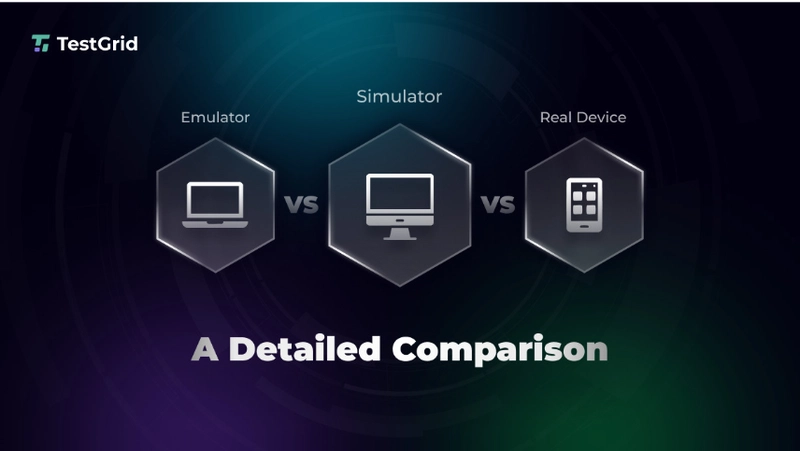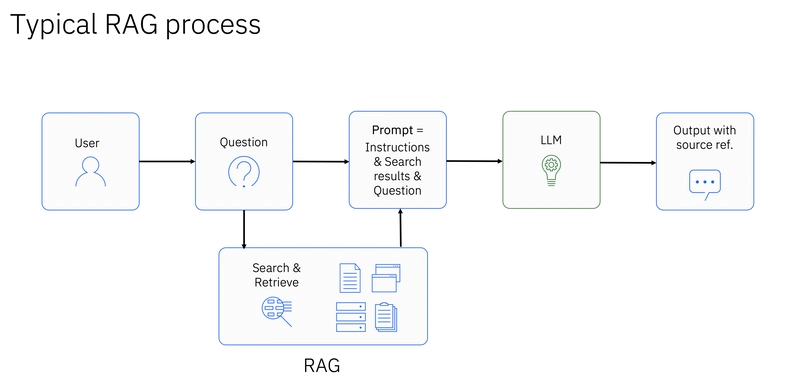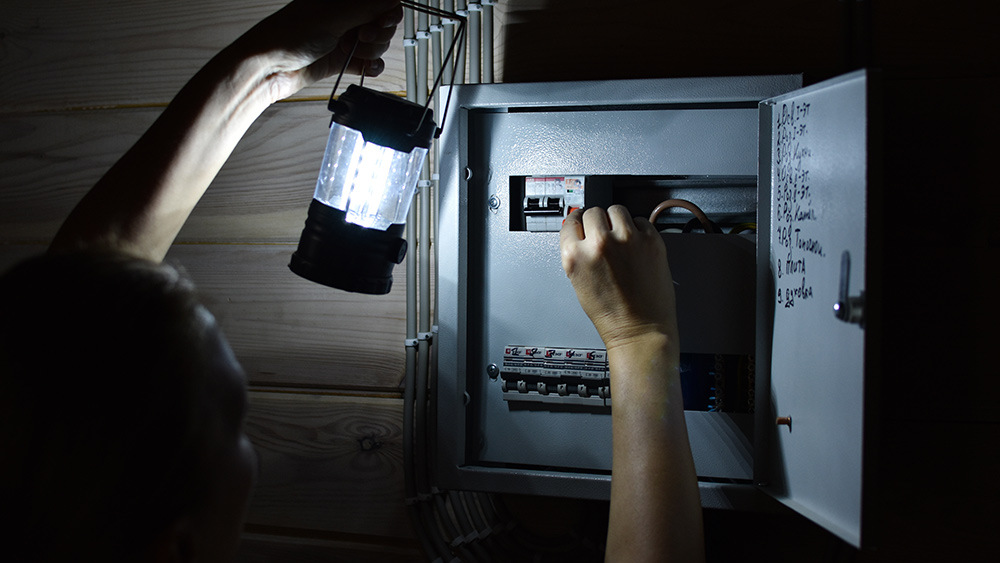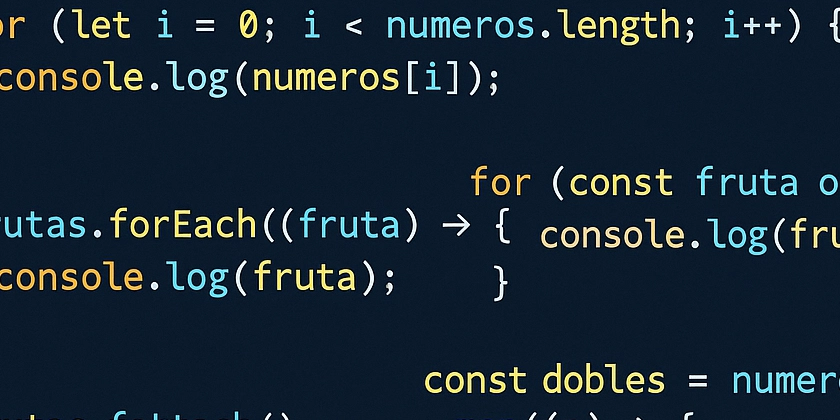Why Is Real Device Testing Preferred Over Emulators And Simulators
In the ever-evolving landscape of app development, the imperative to thoroughly test applications across a spectrum of devices and environments is undeniable. Approximately 57% of individuals are unlikely to suggest businesses to their peers if their websites are not optimized for mobile devices. For years, developers relied heavily on emulators and simulators to replicate real-world scenarios and validate their creations. These virtual environments, while convenient, often fell short of capturing the intricacies and nuances of actual device usage. For example, an online Android emulator cannot replicate all the functions of a real Android phone. As technology advanced and user expectations soared, the limitations of emulators and simulators became increasingly apparent. Enter real device testing—a paradigm-shifting approach that has redefined the very essence of app testing. Unlike its virtual counterparts, real device testing involves executing application testing on physical devices, ranging from smartphones and tablets to wearables and IoT gadgets. This shift from simulation to reality has ushered in a new era of precision and authenticity in the testing process. In this blog, we will take you through the reasons for this change and the advantages real device testing offers. Types of Mobile Device Testing Mobile device testing is a crucial aspect of the software development process, safeguarding your applications’ integrity and upholding your brand reputation. As technology progresses, so does the landscape of testing methodologies, presenting a diverse array of solutions tailored to the intricacies of mobile app development. Among the primary categories of mobile device testing solutions are: Virtual Devices Real Devices What is Virtual Device Testing? Virtual devices offer a simulated environment for testing mobile applications without the need for physical hardware. These virtualized platforms replicate the behavior of real devices, enabling developers to assess app functionality across various device configurations, operating systems, and screen sizes. Emulators Emulators replicate the hardware and software of a target device on your computer, allowing you to test apps in a virtual environment. They translate the instructions of the target device into those compatible with your computer, enabling you to mimic its behavior. However, this can sometimes lead to latency issues. Simulators Simulators are software that enables your computer to run programs designed for a different operating system. They are commonly used for iOS devices like iPhones and iPads. Unlike emulators, simulators don't mimic hardware but provide a simulated environment for running applications. However, they require macOS to run, limiting their accessibility to developers who don't have access to Apple's operating system. Pros And Cons of Virtual Device Testing Pros: Cost-Effective: Emulators and simulators save money by removing the need to purchase and maintain actual devices for testing. With countless device, OS, and browser combinations to test, this cost-efficiency is invaluable. Accessibility: Setting up and accessing virtual environments is easy, making them ideal for testing at various stages of the software development life cycle. Parallel Testing: Multiple emulators or simulators can be run simultaneously, allowing for parallel testing across different operating systems and device configurations. Consistency: Emulators and simulators provide a controlled testing environment, ensuring consistent testing conditions and repeatable results. Cons: Limited Realism: Emulators and simulators can't perfectly replicate the hardware and software characteristics of real devices. They cannot replicate actions like scrolling, pinching, and zooming or sensor inputs like GPS. Hardware-Specific Issues: Some features like camera functionality, battery life, and GPS performance can only be accurately tested on real devices. UI/UX Testing Challenges: Testing user interface and experience in virtual environments may lack the true feel and responsiveness of real devices, such as touch sensitivity and physical buttons, posing limitations in assessing user interactions. What is Real Device Testing? Real devices provide an authentic testing environment by executing applications on physical smartphones, tablets, or other mobile devices. Unlike virtual devices, real devices offer unparalleled accuracy in capturing device-specific behaviors, hardware nuances, and user interactions. Testing on real devices ensures a comprehensive evaluation of an application's performance, compatibility, and user experience across diverse platforms and usage scenarios. While real device testing may require more resources and logistical considerations, its ability to mirror real-world conditions makes it indispensable for achieving optimal app quality and user satisfaction. Pros And Cons of Real Device

In the ever-evolving landscape of app development, the imperative to thoroughly test applications across a spectrum of devices and environments is undeniable. Approximately 57% of individuals are unlikely to suggest businesses to their peers if their websites are not optimized for mobile devices.
For years, developers relied heavily on emulators and simulators to replicate real-world scenarios and validate their creations. These virtual environments, while convenient, often fell short of capturing the intricacies and nuances of actual device usage. For example, an online Android emulator cannot replicate all the functions of a real Android phone. As technology advanced and user expectations soared, the limitations of emulators and simulators became increasingly apparent.
Enter real device testing—a paradigm-shifting approach that has redefined the very essence of app testing. Unlike its virtual counterparts, real device testing involves executing application testing on physical devices, ranging from smartphones and tablets to wearables and IoT gadgets. This shift from simulation to reality has ushered in a new era of precision and authenticity in the testing process.
In this blog, we will take you through the reasons for this change and the advantages real device testing offers.
Types of Mobile Device Testing
Mobile device testing is a crucial aspect of the software development process, safeguarding your applications’ integrity and upholding your brand reputation. As technology progresses, so does the landscape of testing methodologies, presenting a diverse array of solutions tailored to the intricacies of mobile app development.
Among the primary categories of mobile device testing solutions are:
- Virtual Devices
- Real Devices
What is Virtual Device Testing?
Virtual devices offer a simulated environment for testing mobile applications without the need for physical hardware. These virtualized platforms replicate the behavior of real devices, enabling developers to assess app functionality across various device configurations, operating systems, and screen sizes.
Emulators
Emulators replicate the hardware and software of a target device on your computer, allowing you to test apps in a virtual environment. They translate the instructions of the target device into those compatible with your computer, enabling you to mimic its behavior. However, this can sometimes lead to latency issues.
Simulators
Simulators are software that enables your computer to run programs designed for a different operating system. They are commonly used for iOS devices like iPhones and iPads. Unlike emulators, simulators don't mimic hardware but provide a simulated environment for running applications. However, they require macOS to run, limiting their accessibility to developers who don't have access to Apple's operating system.
Pros And Cons of Virtual Device Testing
Pros:
- Cost-Effective: Emulators and simulators save money by removing the need to purchase and maintain actual devices for testing. With countless device, OS, and browser combinations to test, this cost-efficiency is invaluable.
- Accessibility: Setting up and accessing virtual environments is easy, making them ideal for testing at various stages of the software development life cycle.
- Parallel Testing: Multiple emulators or simulators can be run simultaneously, allowing for parallel testing across different operating systems and device configurations.
- Consistency: Emulators and simulators provide a controlled testing environment, ensuring consistent testing conditions and repeatable results.
Cons:
Limited Realism: Emulators and simulators can't perfectly replicate the hardware and software characteristics of real devices. They cannot replicate actions like scrolling, pinching, and zooming or sensor inputs like GPS.
Hardware-Specific Issues: Some features like camera functionality, battery life, and GPS performance can only be accurately tested on real devices.
UI/UX Testing Challenges: Testing user interface and experience in virtual environments may lack the true feel and responsiveness of real devices, such as touch sensitivity and physical buttons, posing limitations in assessing user interactions.
What is Real Device Testing?
Real devices provide an authentic testing environment by executing applications on physical smartphones, tablets, or other mobile devices. Unlike virtual devices, real devices offer unparalleled accuracy in capturing device-specific behaviors, hardware nuances, and user interactions. Testing on real devices ensures a comprehensive evaluation of an application's performance, compatibility, and user experience across diverse platforms and usage scenarios. While real device testing may require more resources and logistical considerations, its ability to mirror real-world conditions makes it indispensable for achieving optimal app quality and user satisfaction.
Pros And Cons of Real Device Testing
Pros:
- Reliability: Testing on real devices ensures reliability by allowing testers to evaluate nearly all real-world scenarios.
- Accurate Simulation: Real devices can accurately simulate battery performance, incoming interruptions, display color, and brightness, providing more precise testing results.
- Usability Testing: Real devices enable usability testing, including assessing screen color resolution and the overall look and feel of the application.
Cons:
- Cost: Real testing devices can be expensive to purchase and maintain.
- Challenges with Variety: Testing on real devices can be a challenge due to the wide range of handsets available, especially when working with tight deadlines.
Why is Real Device Testing Becoming Popular?
Real device testing is crucial in software development for several reasons:
- Ensuring Compatibility: With so many devices in the market, it's vital that software works well on all platforms. Real device testing helps identify compatibility issues, allowing developers to optimize software performance across different devices.
- Improving User Experience: User experience is key to the success of any application. Real device testing helps evaluate aspects like responsiveness, loading times, and usability across various devices, ensuring a positive user experience.
- Detecting Issues: Real device testing helps uncover bugs, crashes, and performance issues that may occur in real-world situations. By simulating real-life conditions, testers can identify and fix potential problems, leading to a smoother user experience.
Conclusion
While virtual device testing has its merits, the rise of real device testing marks a significant advancement in the field of app development. By providing a more authentic testing environment and enabling comprehensive evaluations, real device testing is poised to become the standard in ensuring the quality and performance of mobile applications. As technology continues to evolve, embracing real device testing will be essential for developers to gain a competitive edge.
For developers seeking the most reliable and efficient real device testing solution, TestGrid stands out as the premier platform. TestGrid provides unparalleled access to real-world testing scenarios. It lets you test across a combination of different real devices and browsers on the cloud for a 100% real user experience. From compatibility testing to usability evaluations, TestGrid empowers developers to deliver flawless mobile applications with confidence. Embrace the future of mobile app testing with TestGrid and elevate your development process to new heights of excellence.









































































